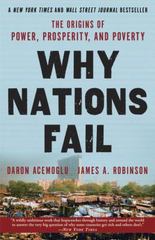Please help me with the following questions
Suppose we have the following demand and supply functions HOME: Demand P = 100 - 12 Q Supply P = V Q FOREIGN Demand P =200 -2 Q Supply P = 1 Q 1: Two-country model with IMPORT TARIFFS: use the functions above a) Calculate the free trade world price and the quantity traded. Also find CS, PS, and SS for each country in free trade. b) Suppose the importer imposes an import tax of $2 per unit. Calculate the new equilibrium world price. What are Home's and Foreign's domestic prices? c) Find the change in Social Surplus in each country. Give details on changes to CS and PS. Recall that import tariffs revenue need to be included in social surplus (EG: SS = CS + PS + revenue) d) Does the importer gain from the tariff. Does the exporter? Show and explain fully. Give the intuition. e) Find the importer's optimal tariff (to the nearest whole number). Show your work.3. Now, suppose the importing country government wants to protect domestic producers. To do so, it imposes specific import tariff equal to $2 per physical unit of the imported good. (a) Find the new equilibrium prices, trade quantity, and consumption as well as production in each country. (2.5 points) (b) Calculate CS, PS, GS, and TS for each country. How big are the gains/losses for each country relative to free trade? How does the world's total welfare change? (5 points) 4. Now, consider a case where the importer does not impose any tariff but the exporting country enforces specific export tax equal to $2 per physical unit of the exported good. (a) Find the new equilibrium prices, trade quantity, and consumption as well as production in each country. (2.5 points) (b) Calculate CS, PS, GS, and TS for each country. How big are the gains/losses for each country relative to free trade? How does the world's total welfare change? (5 points) 5. Now suppose the case with both import tariff and export tax each equal to $2 per physical unit. (a) Find the new equilibrium prices, trade quantity, and consumption as well as production in each country. (2.5 points) (b) Calculate CS, PS, GS, and TS for each country. How big are the gains/losses for each country relative to free trade? How does the world's total welfare change? (5 points) 3 6. Now consider the game where each country has two actions: protection or free trade. Given the wel- fare outcomes you derived above and assuming that each government wants to maximize total surplus in its country, find the Nash equilibrium of this game. Make sure you clearly draw the two by two game first with proper outcome numbers from your calculations above. What policy lesson do we get from this practice? (4 points)14-54 As a recent graduate, you are considering A employment offers from three different companies. However, in an effort to confuse you and perhaps make their offers seem better, each company has used a different purchasing power base for express- ing your annual salary over the next 5 years. If you expect inflation to be 2.5% for the next 5 years and your personal (real) MARR is 5.0%, which plan would you choose? Company A: A constant $60,000 per year in terms of today's purchasing power. Company B: $50,000 the first year, with increases of $5,500 per year thereafter. Company C: A constant $70,000 per year in terms of Year-5-based purchasing power









